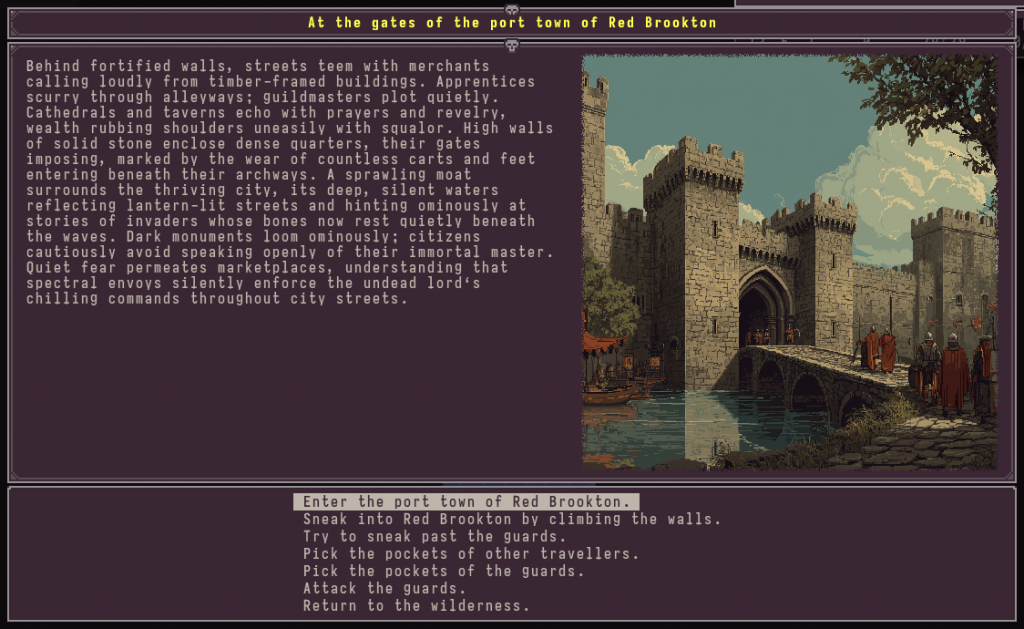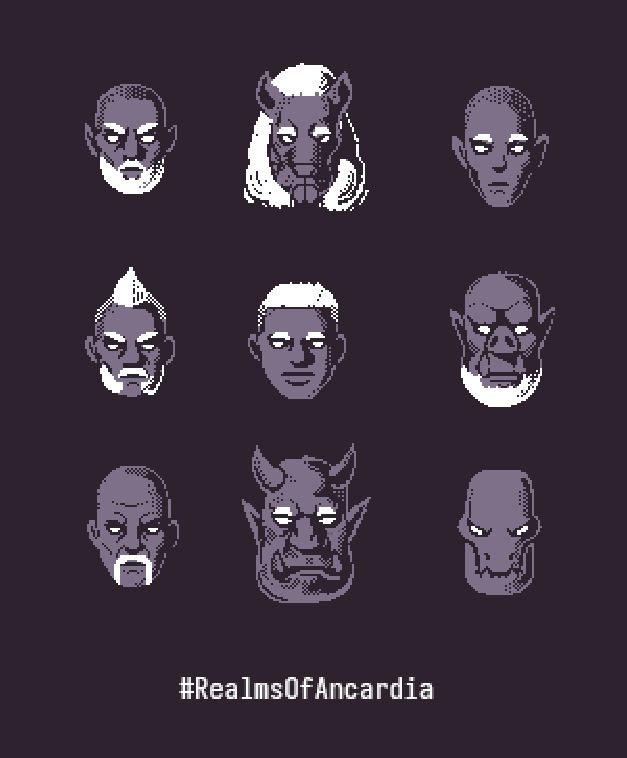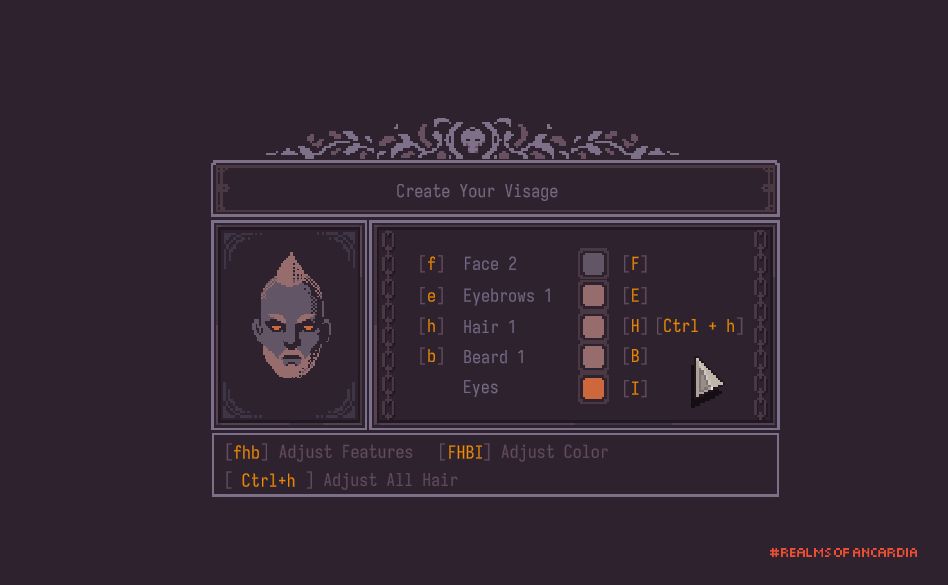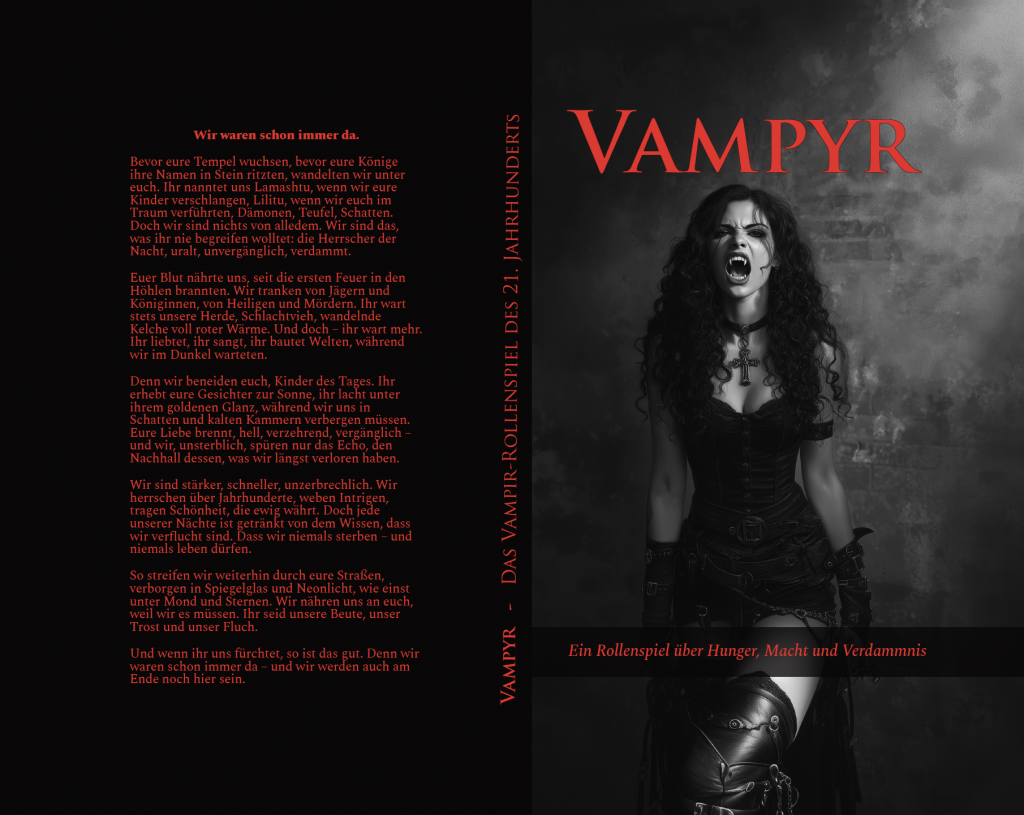Vacation time is over (sadly) which means that we return full throttle to working on Realms of Ancardia. I needed a day or two to remember all the things I forgot during the past couple weeks (so much for my literate codind skills 😉 and I again was sidetracked by weird mini project I felt compelled to complete (after getting addicted to the Vampire Diaries I felt the need to write my own vampire TTTRP – 104 pages later it’s no at Lulu for layout 🙂 ).
If you care here’s front and back of the rulebook containing 104 pages in novella format with compact rules for nice Vampyr sessions…
Now I am finally looking forward to adding actual fun gameplay to Realms of Ancardia – pardon the distractions 😉
Message log and command popup added
We have replaced the continuous message log to the lower right with a context specific popup. We feel that the extra “pop” is a good change to indicate that something important is going on compared to long text logs where it is easy to lose sight of important status changes. What do you think?
Also we now have a popup that shows commands that are available depending on the current context:
Implementation of settlement gate procedure started
Entering a settlement is a small detail – but it has many intricacies. Depending on the organization of the settlement there might be (guarded) gates, guards might raise taxes, random events could occur, you might gather helpful information about the settlement before actually starting to move through it (which can be useful – some settlements might be very dangerous or could affect your health, sanity or whatever).
This week I started the implementation of the procedure for entering a settlement but I probably will need another week to finish it due to the amount of detail to be covered and some lose ends from earlier weeks (e.g. attributing precise number of guards to the individual gates) in order to present a tangible challenge at the gate.
Here we go with a preliminary screenshot – the UI still needs some polish:

Scene graph implementation
Realms of Ancardia uses content-based scene graphs. Note that this is different from the common understanding of scenes and scene graphs in many programming languages where these termins describe graphical nodes and the graphical composition of a view.
In Realms of Ancardia a scene graph is a logical content structure that describe how a specific scene might work out.
Scenes can be highly variable:
- entering a settlement
- visiting a shop
- talking to a stranger
- examining a weird altar in a dungeon
- etc.
Logically Realms of Ancardia uses a graph of connected scenes. Scenes can lead into each other (e.g. the generic Gate of Settlement scene might lead into the Negotiate Taxes with the Guards scene or the Pick a Fight scene or … whatever).
Scenes have graphical elements (e.g. images or videos to make them more tangible), text elements (e.g. the impression of a city you get when moving towards its gate) and interactive elements (how you respond to the scene).
This week I finished both the implementation of the architecture and the data structure for these scenes as well as of the graphical scene handler that takes an arbitrary scene graph and navigates the player through it, altering the game state, executing consequences, etc.
The screenshot above already is using the scene graph mechanism underneath.
Portraits
Krys did an amazing amount of working on devising a system for building individual portraits:

The individual parts are configurable and you can colorize each element:

Miscellaneous minor changes and additions
- The spacing for the in-game stats has been adjusted slightly to use the available white space more reasonably:

- Internal mechanisms for adding missing translations have been improved.
- Fixed an integer overflow bug in internal random number generation.
Total size of the codebase after this week
- 39,413 LOC in 651 files for the actual Realms of Ancardia game
- 27,357 LOC in 451 files in my own underlying TBRLAPI framework library supporting my most recent roguelike games
- plus extra external configuration files, images, tilemaps, audio files, etc.
The running total is available here.
State of our internal ticket system
We use YouTrack to manage ideas and bugs that pop up. The listings are by no means complete – it’s more of a “don’t eventually forget to fix this bug / add that amazing feature” pipeline that gives a little structure to our development process without turning it into a managed project 😉
- 151 open issues in total
- 59 closed issues in total

Leave a Reply
You must be logged in to post a comment.